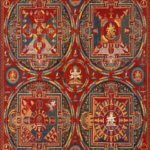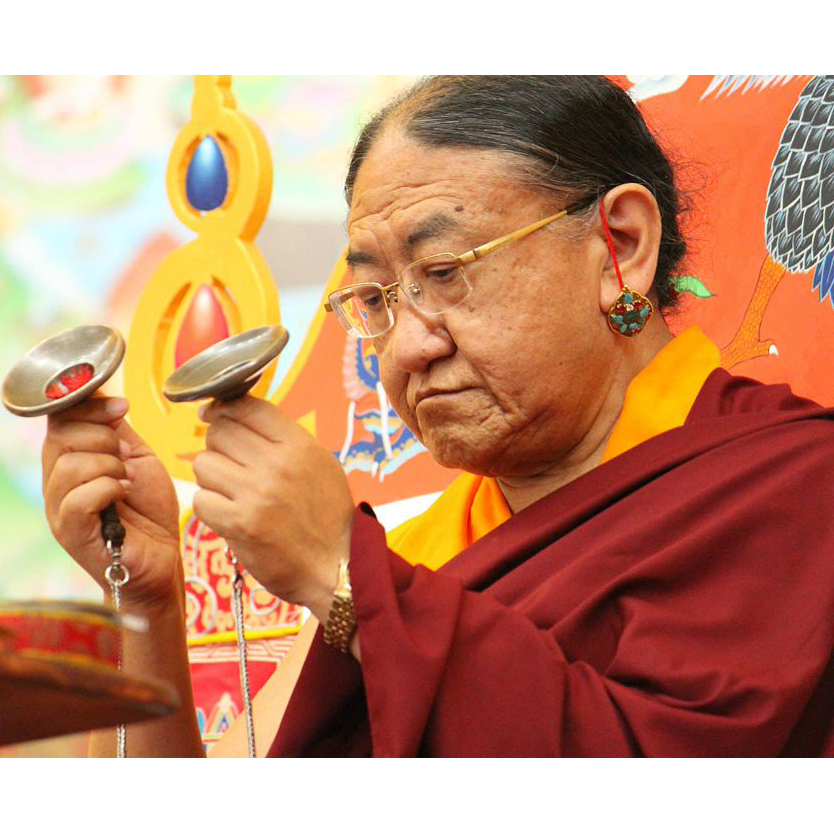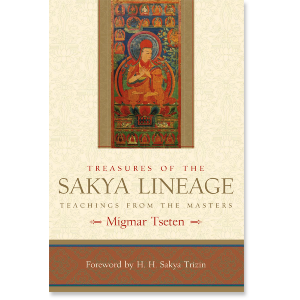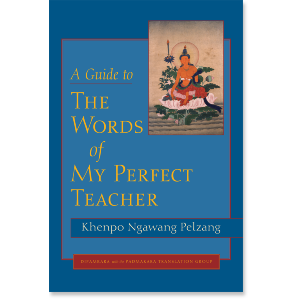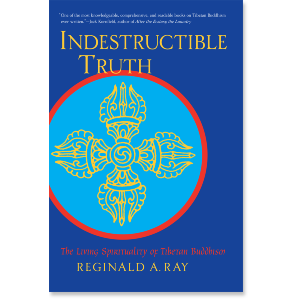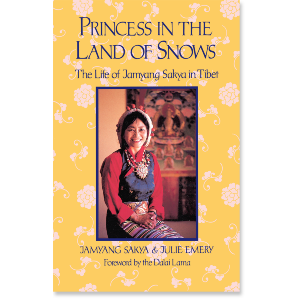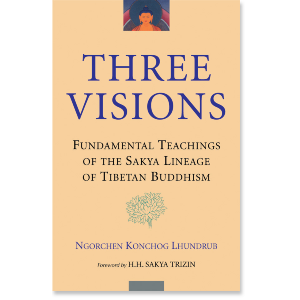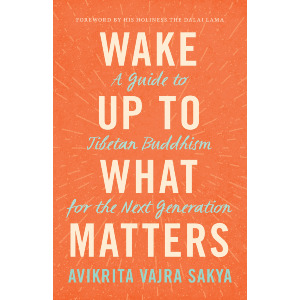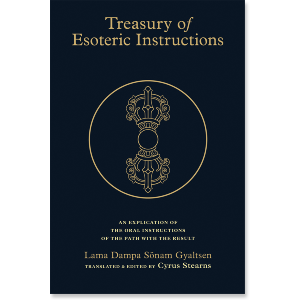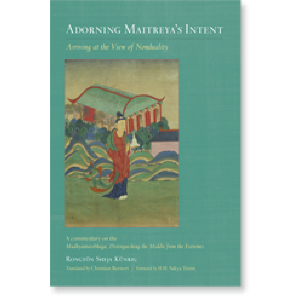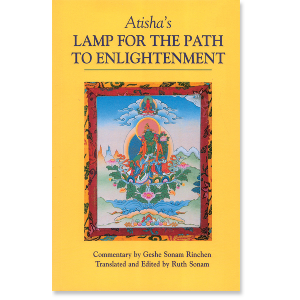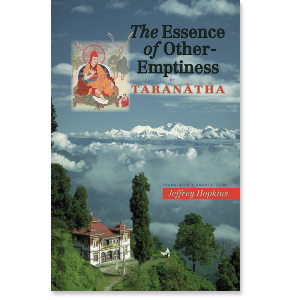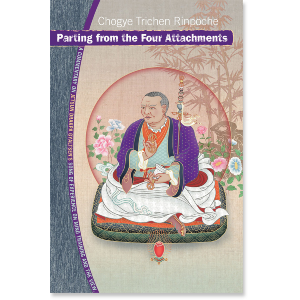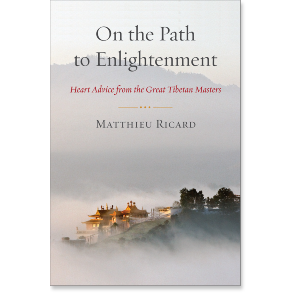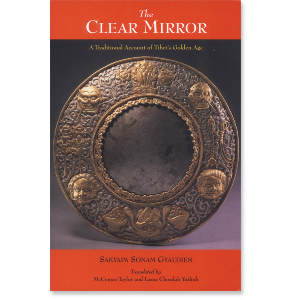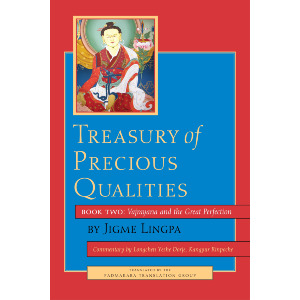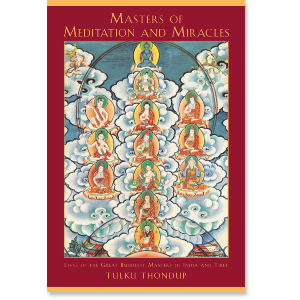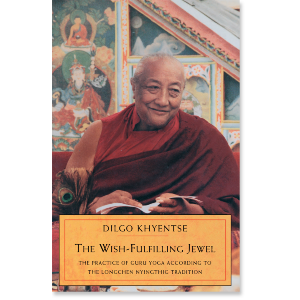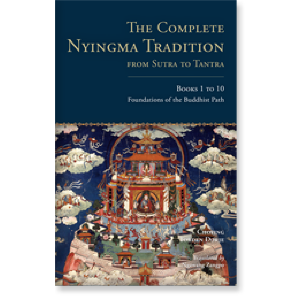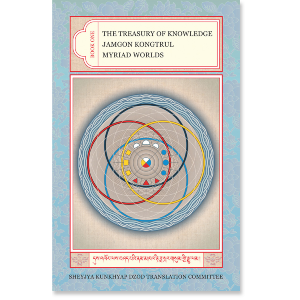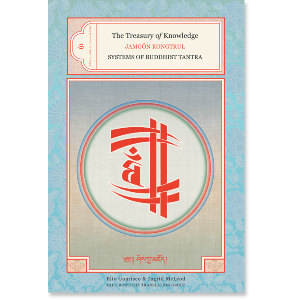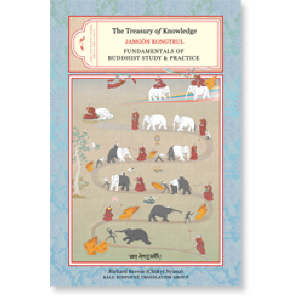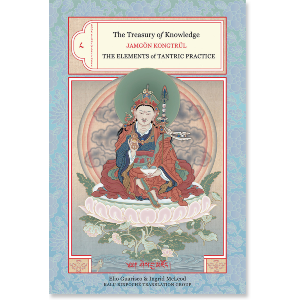| The following article is from the Spring, 1999 issue of the Snow Lion Newsletter and is for historical reference only. You can see this in context of the original newsletter here. |
An Interview with
His Holiness Sakya Trizin
&
Ratna Vajra Rinpoche
On the History and Practices of the Common and Uncommon Lamdre
Lamdre is actually the most important teaching in the Sakyapa Order. . . . It is a complete teaching of how an ordinary person can enter the path, the Vajrayana path.
An Interview with HIS HOLINESS SAKYA TRIZIN
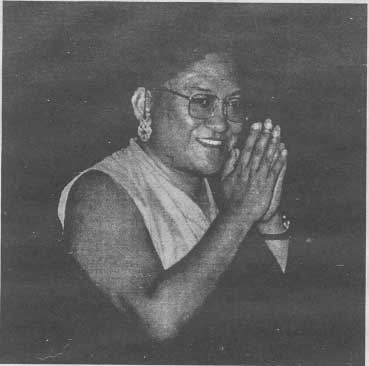
His Holiness Kyabgon Gongma Trichen Rinpoche (The Sakya Trichen)–the 41st head of the Sakya Order of Tibetan Buddhism until March 2017
Linda Tokarchuk: Your Holiness, can you describe what the Lamdre teaching is?
His Holiness Sakya Trizin: Lamdre is actually the most important teaching in the Sakyapa Order. Lam means the path, and Ore, the result. It actually means the complete teaching from the base, to the path and then to the final results.
It is a complete teaching of how an ordinary person can enter the path, the Vajrayana path. The complete teachings include the preliminaries and the main practices up to the final achievement.
The Mahasiddha Virupa received this teaching. Mahasiddha Virupa is one of the very famous Indian masters, who received this teaching directly from the deities. Since then, it was passed down through Indian masters and then to the Tibetan translators and thus it came to Tibet.
L: How is the master Virupa related to the Sakya lineage?
HH: Not in the physical reality, but the Sakyapas consider themselves to be the main teaching holders of Vinipa. As Virupa's main teaching is the Lamdre, the Sakyapa's main teaching is the Lamdre too.
Muchen Kunchog Gyaltsen. . . gave the most esoteric, essential and important teachings to his innermost disciples. . . . Since then there have been two Lamdres.
L: Within the Lamdre teachings, what is the difference between the Common Lamdre and Uncommon Lamdre?
HH: In early Sakya tradition, Lamdre was actually one teaching. Later, during the time of Muchen Kunchog Gyaltsen, when he gave Lamdre teachings, he gave the most esoteric, essential and important teachings to his innermost disciples in his private room, whereas for the assemblies he gave the common one. Since then there have been two Lamdres.
L: Is the Uncommon Lamdre more complicated?
HH: Yes. It is much more profound and elaborate in explanation.
L: Because of the difficult times, these days, with so many distractions, it is very difficult to be able to practice as in the past. Do you have any advice for people wishing to practice the Uncommon Lamdre? How hard is it, can people today have the opportunity to practice it properly?
HH: Yes, well it depends on the individual. Some people can practice very, very seriously. Some people can't. So you can't say to everybody one thing. It all depends on the individuals.
I think that today, with so many distractions, it is very important for practitioners to first train well in concentration before starting anything else. Your mind will sort of become calmer, more relaxed and steadier. Then your practice will be better, even the common practices.
today, with so many distractions, it is very important for practitioners to first train well in concentration before starting anything else.
L: Unfortunately today, not many people are even at that level. So, what then? If someone were having trouble to even calm their mind, would they still be able to benefit from going to the teachings?
HH: Of course. Without studying, how can you practice? Without studying, we even don't know what to practice, what to discard, and what to take. So through the hearing, through the study, you gain knowledge, you will know what to do. So therefore, of course, for those who are interested it is beneficial.
L: The uncommon Lamdre was very rarely given before?
HH: Yes. Nowadays, it is given to quite a large number of people.
L: Is there any reason for that? Why did it change?
HH: Because the audience has increased. More people are interested to receive the teachings.
L: That's wonderful, I would think.
HH: Yes.
Without faith you can't grow any of the other qualities. . . . this faith is not just a kind of blind faith.
L: Can you go into more detail about what the Lamdre teaching is?
HH: You see it has everything the ground, the base, which describes samsaric conditions. We need to know the samsaric conditions. So that is the base.
Then the path, how the person who is dwelling in samsara enters the path. It has all the preliminary practices.
And then how that person enters the Vajrayana path, to receive initiations, and support.
And then you have all the higher practices such as the process of creation, the process of completion, etc. After you enter the higher, more advanced path, finally there is the result, which is Enlightenment.
L: Is there anything that you feel is particularly important for students who would like to receive the teachings to know about or to understand?
HH: Yes. People want to study Buddhism in order to overcome suffering, isn't it? And they want the highest teachings. They want to practice the Vajrayana teachings, teachings such as the Lamdre.
I am not saying that Lamdre is the only teaching. Other schools don't have the Lamdre, but they have similar kinds of teachings. So the teachings like Lamdre are very important to receive and to practice.
The teachings explain the qualifications of the disciple. There are different levels, but the minimum qualification is someone who has an unshakable faith in the teachings. This is very important. Without faith you can't grow any of the other qualities. And also, this faith is not just a kind of blind faith.
In Buddhism, we explain different types of faith. But the most important faith is what is known as a believing faith when through your own intelligence, through your own wisdom, you investigate and then realize that this is the genuine teaching, this is the real teaching.
It is not what somebody told you to believe, but through your own investigation that you come to the conclusion that this is a genuine teaching. When you have such faith you can receive teachings. So, it is really important to make such preparations.
The most important faith is when through your own intelligence, through your own wisdom, you investigate and then realize that this is the genuine teaching, this is the real teaching.
L: What can people do over the next year to prepare themselves properly?
HH: Study and practice the common teachings and general Mahayana teachings. For example, the Bodhicharyavatara, and Parting from the Four Attachments. Such teachings are very important, and if you study these, it will help to receive the Lamdre teachings.
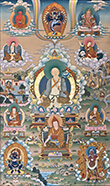
HH: The Lamdre lineage holders begin with Mahasiddha Virupa, then there are five Indian masters Krishnapa, Damarupa, Avadhutipa and Gayadhara.
And then the first Tibetan to bring Lamdre, Drogmi Lotsawa, the great translator. Then his disciples Seton Kunrig and Shangton Chobar.
And then there are the five great Sakyapa masters:
-
-
-
-
- Sachen Kunga Nyingpo (1092-1158)
- Sönam Tsemo (1142-1182)- one of Sachen Kunga Nyingpo's sons
- Drakpa Gyaltsen (1147-1216)- one of Sachen Kunga Nyingpo's sons
- Sakya Pandita (1182-1251)- Drakpa Gyaltsen's nephew
- Chögyal Pakpa (1235-1280)- Sakya Pandita's nephew
-
-
-
The great lama Sachen Kunga Nyingpo received the Lamdre from Shangton Chobar.
Thus the teaching was passed down. Then there is the great master Ngorchen Kunga Sangpo, the founder of the Ngorpa school Then later, there is Tsarchen Losel Gyaltsen, the founder of the Tsarpa school or subsect of the Sakyapa Order.
Today, the greatest practitioners of Lamdre teachings are:
There are many more masters, khenpos and practitioners too.
An Interview with RATNA VAJRA RINPOCHE
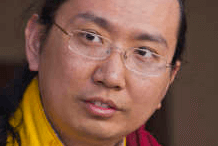
His Holiness the 42nd Kyabgon Gongma Trizin, Ratna Vajra Rinpoche
Linda Tokarchuk: I would like to ask you, when did you receive the Lamdre teachings?
Ratna Vajra Rinpoche (His Holiness Trizin's elder son) (RVR): Actually I have received Lamdre four times, all from His Holiness.
The first one was in Puruwala in 1980, or something like that.
The second one was in 1996, in Sakya Center.
The third one was in Australia, in 1997, and the fourth one also in 1997 and in Singapore.
L: His Holiness has given the Uncommon Lamdre only a few times, is that right?
RVR: Yes. I think only three times.
His very first Uncommon Lamdre was in Puruwala, I think. And the second in 1984, and third in Australia.
the Lamdre teachings include all the essence of Hinayana, Mahayana and Vajrayana teachings.
L: What is so profound and special about Lamdre teachings?
RVR: I think, the Lamdre teachings include all the essence of Hinayana, Mahayana and Vajrayana teachings.
L: And could you, for people who don't know, describe what Triple Vision and Triple Tantra mean?
RVR: Actually, the Triple Vision is like a preliminary teaching. You can receive the Triple Vision before you receive any initiation.
It is not a Vajrayana teaching. It is like the Bodhicharyavatara. In the Triple Vision text, there are many quotations from Bodhicharyavatara.
The Triple Tantra is a secret teaching. It belongs to Mantrayana.
Normally when you receive Lamdre, you receive Triple Vision, and then after that you receive the cause initiation. Hevajra cause initiation, is a wang chena–two-day initiation: the preliminary and the main initiation.
After that you receive the Triple Tantra. During the Triple Tantra teaching, you receive the Hevajra path initiation.
Everybody has the capability to attain the enlightened state . . . [unless] you don't meet with the right cause and conditions. . . .
L: And that is the pinnacle of the teachings, the result?
RVR: Yes. Everybody has the capability to attain the enlightened state. But if you don't meet with the right cause and conditions, then you won't be able to attain it.
For example, if the seed of the rice is kept in the box, then there cannot be a sprout from this seed as it has not met with the right causes and conditions, like water and so forth.
The method, the Body Method Tantra is like the path. To bear the fruit, you need to practice the teachings.
For example, if you plant the seed on the fertile ground, then you need to put water, and fertilizers and so forth. And if you have met all the right causes and conditions, then you will bear the fruit.
So like this, if you practice with all the right cause and conditions to gain the result, then finally you will get the result, which is the third Tantra, the Non-ordinary or Result Tantra.
Lamdre teachings will lead sentient beings from suffering and dissatisfaction to temporary and then ultimate happiness.
L: What are the benefits of receiving Lamdre teachings?
RVR: Lamdre teachings will lead sentient beings from suffering and dissatisfaction to temporary and then ultimate happiness.
If you practice Lamdre in a right way, then you will be happier. Your mind will be happier. You can practice more.
And you can decrease the defilement, at the moment. And finally, you can eliminate all the defilement that is within our own mind.
And also, it makes our physical body healthier because in Lamdre, there is also a physical practice. So if you do this, then you will not get any illnesses. And you'll be healthier.
And finally you will attain the highest, and the ultimate happiness, for both the mind and the body.
it makes our physical body healthier because in Lamdre, there is also a physical practice.
L: What is the physical practice?
RVR: In Lamdre teaching, there is a kind of yoga practice.
Actually one difference between the Common and the Uncommon Lamdre teaching is that in Uncommon teaching, there is a physical practice like a yoga, whereas in Common, there isn't one.
L: Are there a lot of practices to do afterwards? Like for example you said that part of the practice afterwards is the physical yoga?
RVR: Actually, after receiving the initiations, the Hevajra initiations, you have to do a daily sadhana.
L: So people need to be prepared to make a serious commitment then?
RVR: Serious commitment in the sense that people have to do practice daily.
But someone may receive the Triple Vision teachings and not whole path, that is also okay.
I mean, if you don't receive the initiation, just the Triple Vision teachings, then you don't need to do the daily sadhana.
His Holiness . . . is born as a member of the Khon lineage and . . . an emanation of Manjushri and . . . Padmasambhava.
L: It is a great honor or special and extraordinary blessing to be able to receive the teachings from His Holiness. Could you comment on that?
RVR: His Holiness is a great master. He is born as a member of the Khon lineage and we believe that he is an emanation of Manjushri and also of Padmasambhava.
There is no contradiction in being an emanation of Padmasambhava and Manjushri, as both of them are in reality Buddha.
He is also a very great and learned master. He showed extraordinary abilities when he was very young, which ordinary people cannot do at that age.
For example, he undertook the Hevajra retreat when he was eleven years old, I think, for about 8 months, waking up at about 3 o'clock in the morning, and doing practice until night. So, it indicates that he is not just an ordinary person.
the present time is a time of degeneration, it is very rare to receive Lamdre teachings. . . it is a very, very great opportunity to receive the profound Lamdre teachings from a very great master.
When he was born, there were many auspicious signs that appeared.
I think his guru prophesied that he was a great master. He is also the one who keeps the Collection of Tantra teachings alive.
Nowadays, it is difficult. There are not many great teachers who have received Collection of Tantra teachings and initiations. He is one of them.
There are great teachers who have received all, but they are old, so they cannot bestow again. But, he can bestow the teachings, so he is the one who has kept the Collection of Tantra lineage alive.
L: And I think it is special for the West, as he speaks English too.
RVR: Yes, he can speak English. And many westerners say that his explanations are very clear.
L: Is there anything more you would like to say about the teachings for people who are going to receive them?
RVR: Yes, I think it is a very, very great opportunity to receive the profound Lamdre teachings from a very great master. Because the present time is a time of degeneration, it is very rare to receive Lamdre teachings and it is very hard to meet a great teacher too.
Nowadays, there are many, many causes and conditions that lead us in a wrong way and interrupt our practice. So, in order to practice well, it is important to have a teacher.
Without a teacher we cannot practice properly. You cannot practice teachings just by reading a book, without meeting a good teacher or without having a good guide.
How can we practice? So, it is important to have a teacher. And it is important not just to meet the teacher, but also to receive profound instructions from a good teacher.
And as we have this opportunity, it is important to receive the Lamdre teaching.
as we have this opportunity, it is important to receive the Lamdre teaching.
On Lamdre Lobshey, Uncommon Lamdre, bestowed in Vancouver, B. C. Canada in 2000
For more information, please contact Sakya TsechenThubten Ling.

